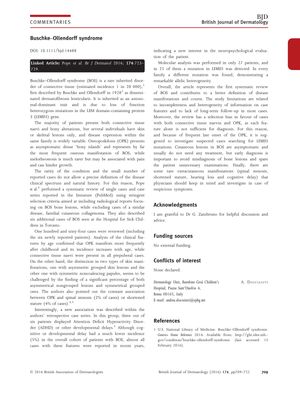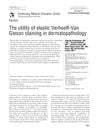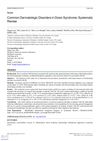Buschke-Ollendorff Syndrome: Clinical Features and Genetic Insights
April 2016
in “
British Journal of Dermatology
”

TLDR Buschke-Ollendorff syndrome is a rare genetic disorder causing skin and bone changes, with some cases also showing ADHD or developmental delays.
Buschke-Ollendorff syndrome (BOS) is a rare autosomal-dominant inherited disorder characterized by connective tissue nevi and bony alterations, with an estimated incidence of 1 in 20,000. The disorder is caused by heterozygous loss-of-function mutations in the LEMD3 gene. A systematic review by Pope et al. analyzed 164 cases, including six new patients, to better understand the clinical features of BOS. The review found that osteopoikilosis (OPK) is the most common bone manifestation and tends to manifest more frequently after childhood, while connective tissue nevi were present in all prepuberal cases. A new association with Attention Deficit Hyperactivity Disorder (ADHD) or developmental delays was noted in three out of six patients in the authors' case series, although these cognitive features were less common in the overall cohort. Molecular analysis in 27 patients revealed LEMD3 mutations in 25 cases, indicating significant allelic heterogeneity. The study highlighted the importance of early diagnosis to prevent misdiagnosis and unnecessary examinations, and to be aware of rare extracutaneous manifestations such as spinal stenosis, shortened stature, hearing loss, and cognitive delay. The limitations of the study included incomplete case information, lack of long-term follow-up, and selection bias towards cases with both connective tissue nevus and OPK.

